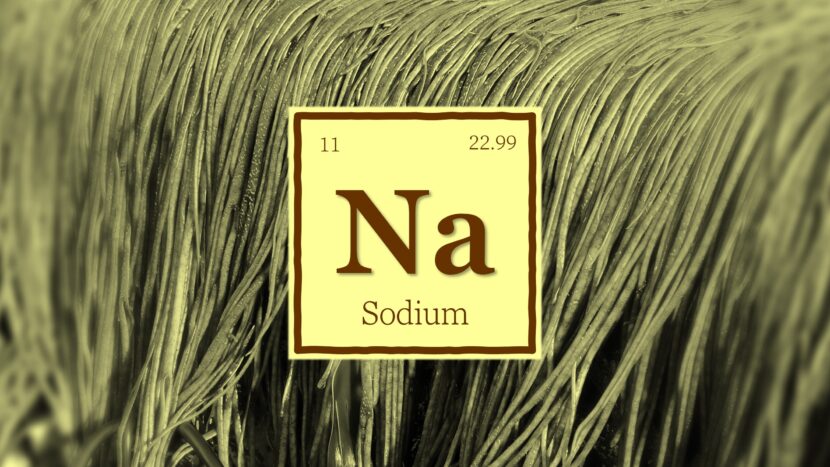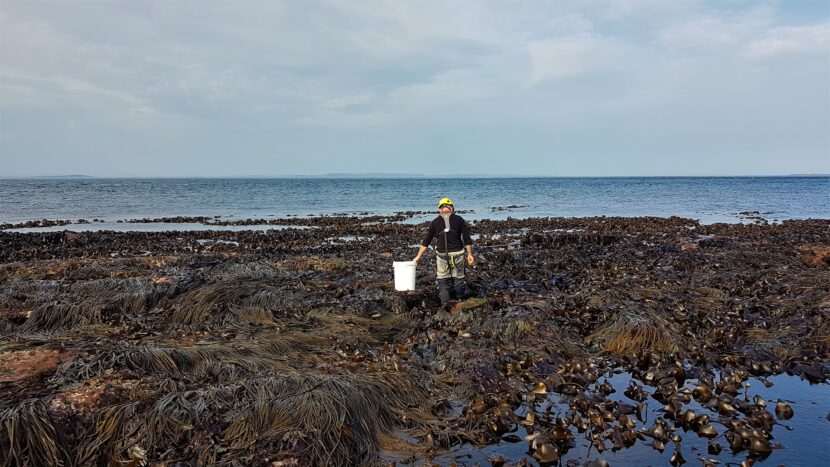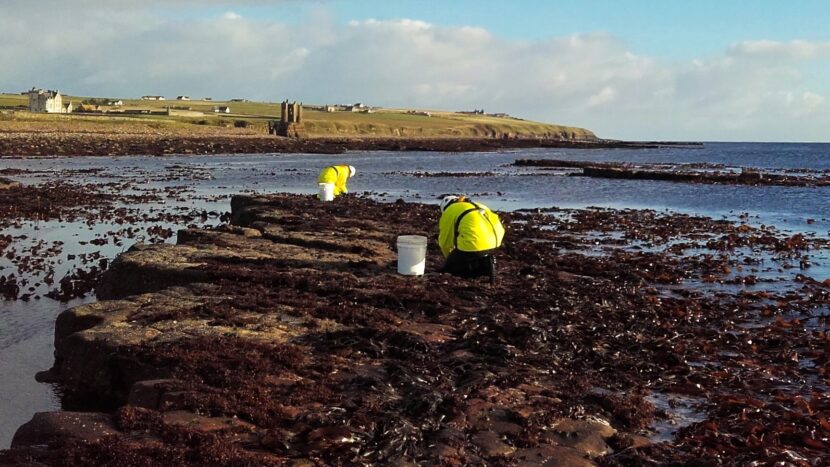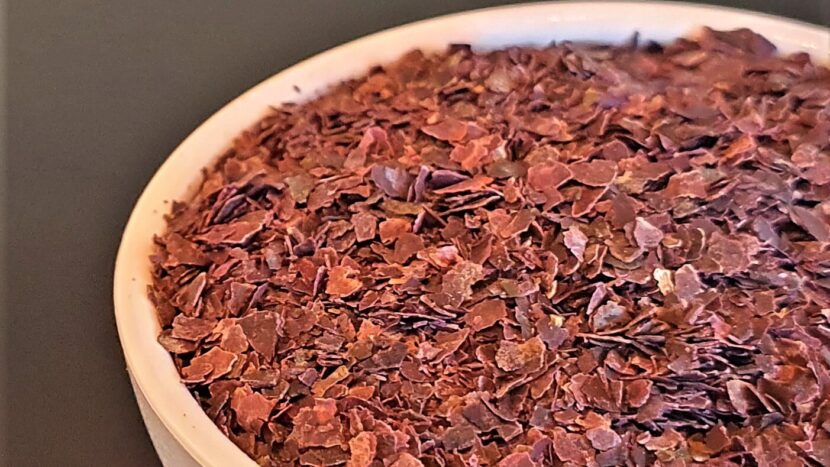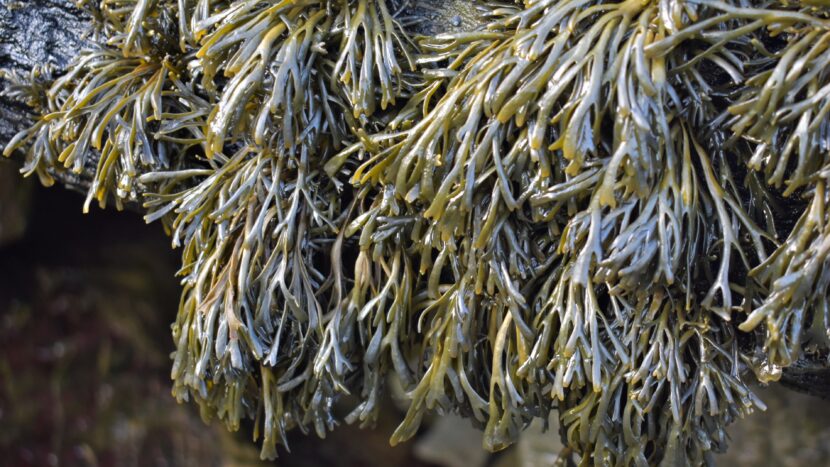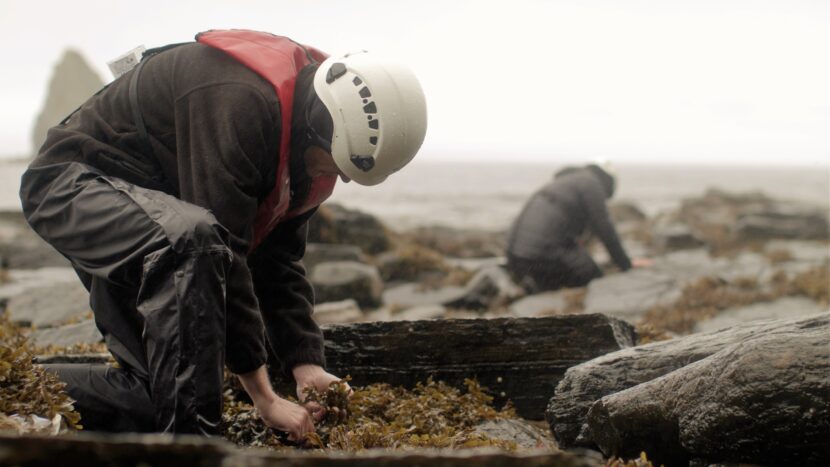Species spotlight: spiral wrack
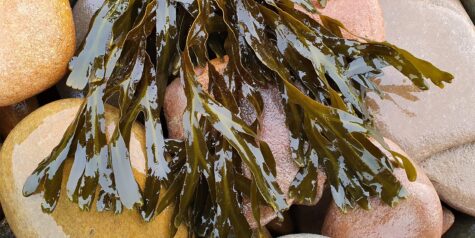
We provides some insight into one of our lesser-known species of seaweed: Fucus spiralis, commonly called spiral wrack. It is a tough survivor thriving at the top of the shore, which influences its composition and applications.
Where does spiral wrack grow?
Spiral wrack is commonly found around the UK coastline, with its native range extending across much of the north Atlantic. Populations have been reported on the west coast of US and Canada, perhaps through accidental human introduction or remnants of a Pacific population. There is a helpful distribution map on the Smithsonian Environmental Research Center website.

Hand harvested spiral wrack
The name derives from the spiral twist of the smooth frond. Reproductive structures called receptacles swell on the tips of the fronds, starting to form in February and releasing gametes in the summer. The plants tend to only reach 30-40cm in length. Spiral wrack will form dense carpets in the right conditions, but will usually be less abundant on more exposed sites. It is one of the few seaweeds that grows at the top of the tidal range, usually just below channelled wrack.
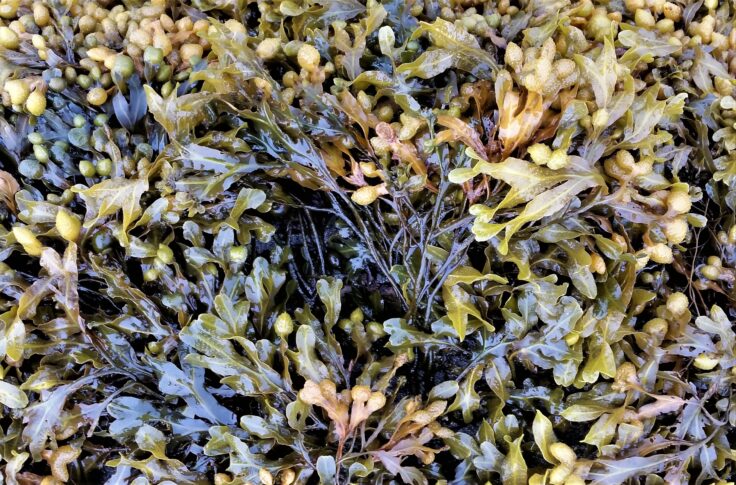
Spiral wrack will often form extensive patches on the upper shore
Thriving under extreme conditions
Spiral wrack can tolerate some freshwater influence, but what makes this species very special is its ability to endure extremes of temperature, light and desiccation. When the tide is out, varieties growing on the upper shore are exposed to air substantially colder or warmer than the comparatively stable seawater temperature. It is possible for plants to be out the water for over 10 hours. Indeed, spiral wrack may only get a few splashes from breaking waves during the weakest neap tides. Spiral wrack can freeze in the winter, but research has shown it is adapted to recover more quickly than seaweed on the low shore. Warm sunny days present a severe risk of desiccation, with plants experiencing 90% water loss. Remarkably, differences are observed in the drought stress response of spiral wrack at the top and bottom of the tidal range of the species. Smaller plants are better adapted to withstand dry conditions.
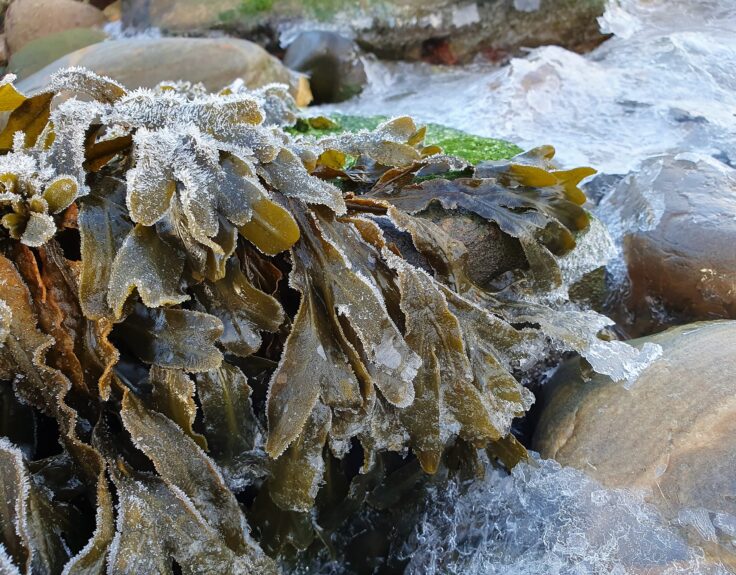
Spiral wrack can survive frost and quickly recover once thawed
Distinguishing spiral wrack from other species
Spiral wrack is sometimes confused with other related species. It can look similar to toothed wrack (Fucus serratus) but with a straighter edge to its frond. However, they rarely mix as the two species are found at different shore heights. Bladder wrack (Fucus vesiculosus) is a bigger relative of spiral wrack. They look similar, but spiral wrack does not have air bladders. The situation is complicated by a variant of bladder wrack on exposed coastline that has no air bladders to help reduce drag when hit by waves. Furthermore, the two species sometimes form hybrids with traits of both. Seaweed is rarely straightforward!
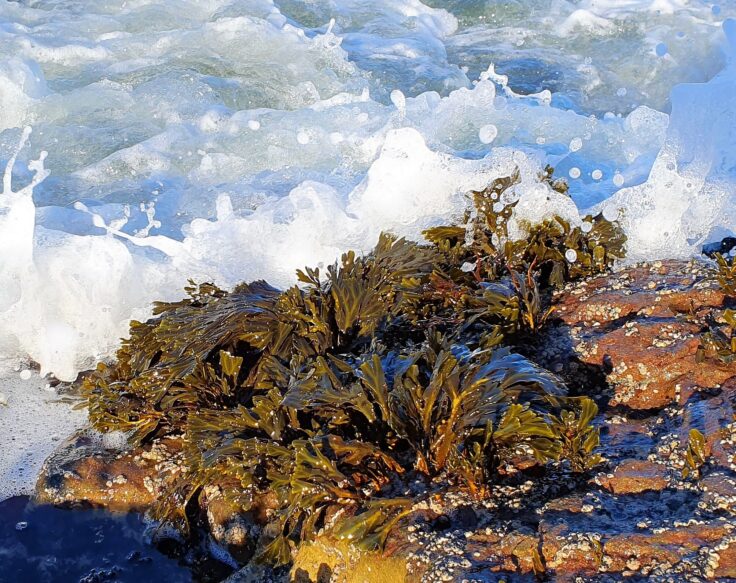
On exposed coasts, spiral wrack can be confused with the stunted variant of bladder wrack shown here
Short harvesting season
Identification of spiral wrack was a challenge for the team when we first started harvesting in 2016. One of our earliest batches had to be relabelled with the correct species name on intake at our Wick processing facility. Now, with over eight years of experience across hundreds of harvesting trips, distinguishing between varieties is second nature for our team.
Growing on the upper shore means that it is possible to pick spiral wrack every day of the month. However, it is unlikely we would allocate harvest effort to this seaweed on spring tides, given the opportunity to pick the wide variety of species exposed on the low shore. The relatively small size of spiral wrack means the rate at which it can be harvested is slower compared to knotted wrack, bladder wrack and toothed wrack. This is compensated for by harvests being less constrained by tide. There are some sites in Caithness where spiral wrack is abundant, especially on the north coast. While varying year to year, we usually harvest spiral wrack between late autumn and early spring. The timings relate to the presence of its receptacles. Compared to other wracks, the species has a relatively short harvest window.
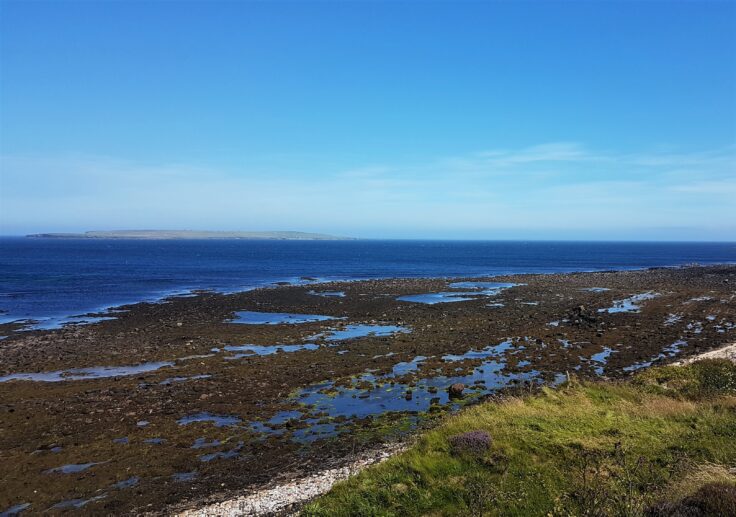
Our harvest site at Gills Bay looks out to uninhabited island of Stroma and is great for spiral wrack
Nutrient levels connected to growing conditions
Spiral wrack typically has the lowest iodine content of the Fucus species we supply. Further information on this can be found in a study of iodine in Irish seaweed. This may be because it is further up the shore and so spends less time absorbing iodine from the surrounding seawater, or more time releasing it into the atmosphere. Spiral wrack also has a more neutral flavour, which makes it suitable for a variety of food applications.
The composition of spiral wrack is linked to the extreme conditions experienced during growth on the upper shore, including UV exposure on sunny days. Analysis has shown this species is a source of polysaccharides, polyphenols and flavonoids. High levels of antioxidants such as phlorotannins in spiral wrack make it an interesting candidate for dermatological applications in cosmetics.
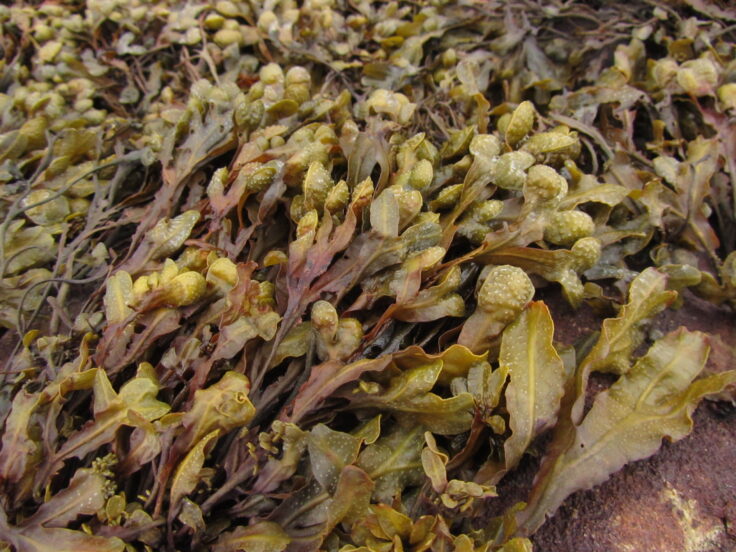
The adaptations to survive challenging conditions contribute to an interesting nutritional composition
Contact us for further information on spiral wrack
Please get in touch if you would like any advice on using this under-appreciated variety of seaweed. Don’t forget to check out our Species Spotlight on toothed wrack!
